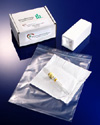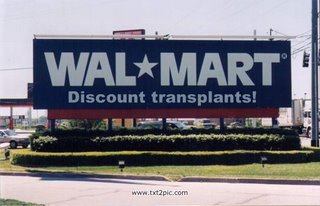When a fax arrived in 2005 with the results of my IgVH mutational status test, I knew the information it contained was going to tell me if my battle with chronic lymphocytic leukemia would likely be an easy one or a hard one. The news was bad -- unmutated -- which means treatment and retreatment and perhaps, in a last roll of the dice, a stem cell (“bone marrow”) transplant.
Another momentous
 fax occurred just recently, while I was undergoing my latest round of Rituxan treatments, on which I will report in the near future. With IV pole in tow, I was returning from the bathroom to my recliner at the infusion room of my hem/onc’s office. There, on the little swing-away table attached to the chair, on which I usually rest crossword puzzles, had appeared another fax, stapled with four pages.
fax occurred just recently, while I was undergoing my latest round of Rituxan treatments, on which I will report in the near future. With IV pole in tow, I was returning from the bathroom to my recliner at the infusion room of my hem/onc’s office. There, on the little swing-away table attached to the chair, on which I usually rest crossword puzzles, had appeared another fax, stapled with four pages.This one was from the National Marrow Donor Program (NMDP). As readers of this blog may recall, Dr. John Byrd advised me to have my HLA typing done, followed by a preliminary search of the worldwide bone marrow donor database, of which the NMDP is a part. This database is a listing of more than five million volunteer stem cell donors and cord blood units in 43 countries.
Finding donors is really an ethnic matter and I am an ethnic mutt. Half of your HLA tissue types come from your father, half from your mother. My father’s side is Russian Jew and my mother, now deceased, was adopted. I never knew her background for sure, but some digging years ago led me to the conclusion that she was probably Irish, or certainly of British Isles stock. Historically, there has not been a lot of intermingling between lassies from Limerick and Jewish hoteliers from Novosibirsk. And Ashkenazic Jews, while whiter than white, maintained their own communities for centuries and are rather distinct, biologically, from other Caucasians in Europe. All us white folks may look alike, but we’re not.
My prospects are still better than those of any number of ethnic minorities. African-Americans, for example, have less of a chance of finding a match, so much so that the NMDP is trying to encourage more African-Americans to become donors. It currently costs $52 to join the registry and be tissue-typed, but there are discounts for what they call “needed minorities.”
What the search is all about
Even before I met with Byrd, I had been gathering that a stem cell transplant could be in my future: If you are younger than about 60 and have progressive CLL, which comes with being unmutated, you may well need a transplant when all the alternatives have been exhausted. Stem cell transplants can give you a new lease on life, literally.
They are risky, of course, and can end in death; but the good news is that in the majority of cases they can provide lengthy remissions and even cures. It is a true roll of the dice, and the odds are improved if you have a matched universal donor, or MUD, someone who
 is not a relative and who matches your HLA tissue type in as many ways as possible. (Indeed, even people with the worst CLL prognostics can be cured by such transplants, which are known as allogenic; the success rate is not as good using cells donated from relatives, and even less when one undergoes an autologous, or self transplant, in which you donate your own stem cells.)
is not a relative and who matches your HLA tissue type in as many ways as possible. (Indeed, even people with the worst CLL prognostics can be cured by such transplants, which are known as allogenic; the success rate is not as good using cells donated from relatives, and even less when one undergoes an autologous, or self transplant, in which you donate your own stem cells.)HLA stands for Human Leukocyte Antigens, which are proteins on the body’s cells. Obviously, if you undergo a transplant and the new cells don’t match the old ones well enough, the body says, “Hey, are you trying to kill me?” and rejects the cells. Thus the need for as good a match as possible. The less perfect the match, the more the odds of success are reduced.
Having your HLA typed and doing the database search is the first step when you need a transplant. But it is also helpful to know the results if you are formulating a long-term treatment strategy, one in which a transplant may become an issue down the road.
Getting some idea of whether there may be a good donor match if and when the time comes can influence your treatment choices. For example, if there is likely to be a match, you may want to save some big chemo guns for your pre-transplant remission, when it is important to get as much clearance of the CLL cells as possible. Campath is one drug, for example, that is used to mop up after therapy, making you as free of CLL as you are likely to get. If it appears there may be no match at all, then you might take a different tack on treatment, perhaps consider using Campath earlier on as part of a program to stall disease progression. All these things vary with the individual, of course, but you get the idea.
Getting it done – cheap!
The good news is that anyone with $165 and a cooperative doctor can learn their basic HLA type and have a preliminary search done.
The place to start is the NMDP’s Office of Patient Advocacy. I cannot say enough good things about these people. They will answer all your questions and send you enough printed material that it might, if stacked end to end, reach the moon. I have spoken to case workers from the office on three occasions, and they have helpful, pleasant, and professional each time.
One of th
 e most useful things they did was recommend Tepnel Labs for my typing test. Since my current health insurance plan does not cover HLA typing (or transplants, for that matter) I am an out-of-pocket player. City of Hope wanted $1600 to do the test. Tepnel will do it for $165. They send a kit to your house, you swab the inside of your cheeks, then return the packet to them by FedEx. After about a month, Tepnel sends you a report listing your HLA typing, which is completely incomprehensible. At your doctor’s request, the NMDP can then run what is known officially as a preliminary search of the donor database, matching your incomprehensible HLA codes against those of others. There is no charge for this. And finally, one day when you are distracted doing something else, a potentially life-changing piece of paper arrives.
e most useful things they did was recommend Tepnel Labs for my typing test. Since my current health insurance plan does not cover HLA typing (or transplants, for that matter) I am an out-of-pocket player. City of Hope wanted $1600 to do the test. Tepnel will do it for $165. They send a kit to your house, you swab the inside of your cheeks, then return the packet to them by FedEx. After about a month, Tepnel sends you a report listing your HLA typing, which is completely incomprehensible. At your doctor’s request, the NMDP can then run what is known officially as a preliminary search of the donor database, matching your incomprehensible HLA codes against those of others. There is no charge for this. And finally, one day when you are distracted doing something else, a potentially life-changing piece of paper arrives.It should be emphasized here that the preliminary search is just that, preliminary. It is done by what is known as low resolution typing and on what are regarded as the six most important markers (A, B, and DR, and we each inherit a double set of these).
If you go ahead with the transplant search -- this is known as a formal search -- the pool of potential donors will be narrowed. Your transplant team will request a test on higher resolution, which could reduce the field, and they may look for a stronger match -- a 6/6 might work, but a 10/10 is even better. And matching isn't everything; matters such as infectious disease histories can come into play. For example, if you are negative for the cytomegalovirus and your potential donor is positive, it may not be a good idea to use that donor’s cells. This next step in the search process can co
 st $30,000 or more, and the transplant itself can run between $300,000 and $400,000. (At this point, yours truly will be working as the world’s most churlish Wal-Mart greeter, if that’s what it takes to get insured for a transplant.)
st $30,000 or more, and the transplant itself can run between $300,000 and $400,000. (At this point, yours truly will be working as the world’s most churlish Wal-Mart greeter, if that’s what it takes to get insured for a transplant.)My results
As I shuffled back to my chair, I knew what awaited me, since my doctor and I had been talking about it recently and we expected the results any day. I sat down and settled in, careful not to kink the IV line, and picked up the fax.
Out of five million adult stem cell donors in 43 countries, a total of 17 were potential matches on 6 of 6 points. On 5 of 6, the total was an additional 668.
This was
 good news. The sea is not swimming with donors for me, but I do have a pondful; there are enough potentially perfect matches that I might find a decent one when the time comes. People drop out of the database -- reasons include pregnancy, flying anvils, reaching the age of 60, which is when a donor’s cells are not considered to be useful any longer. And new people join. But I can reasonably assume that, if and when the time comes, there will be between 10 and 20 potential 6/6 matches for me -- perhaps more, as the number of donors has only grown over the years.
good news. The sea is not swimming with donors for me, but I do have a pondful; there are enough potentially perfect matches that I might find a decent one when the time comes. People drop out of the database -- reasons include pregnancy, flying anvils, reaching the age of 60, which is when a donor’s cells are not considered to be useful any longer. And new people join. But I can reasonably assume that, if and when the time comes, there will be between 10 and 20 potential 6/6 matches for me -- perhaps more, as the number of donors has only grown over the years.There are those who come back with hundreds of matches, and those who come back with zero. In a subsequent conversation with a NMDP patient advocate, she described my results as “hopeful.” However, the pool is still small and it is possible that no 10/10 donors will be found. A cord blood transplant remains another option, and the NMDP will report those matches to you as well. I had no 6/6 but hundreds of 5/6, and in cord blood transplants you can get by with a 4/6 if the cords are large.
At least I now know that a transplant is a realistic option for me. You cannot roll the dice without having dice to roll.
RESOURCES
The National Cancer Institute has a presentation that walks you through the basics of stem cell transplants, complete with plenty of big cartoon pictures to illustrate the main points.
UPDATE
If you know your HLA typing, the National Marrow Donor Program now allows you to run a preliminary search for 6/6 matches in its registry. I just ran mine and found that I am up to 22 potential 6/6 matches, an increase of five in about a year. For more information, go to this page.
-- September 21, 2007





2 comments:
Thank you for that, David. There was a lot of useful information for me there. It is all much simpler in England where no money changes hands, but I now have a much better insight for when I am asked about it by Americans. And you wrote it is such a user-friendly way.
"in England where no money changes hands" . . . Hmmmm. Maybe I should apply for British citizenship in a few years. Beats working at Wal-Mart!!!!
Post a Comment